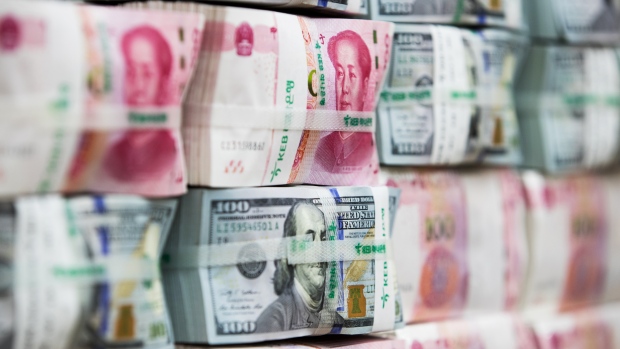Jul 11, 2018
Trump trade war sinks yuan most since 2015 devaluation
, Bloomberg News

Donald Trump’s tariff barrage pushed Chinese markets into their worst selloff since the central bank shocked investors by devaluing its currency.
The offshore yuan fell the most since August 2015, on a closing basis, as the White House said it’s ready to impose 10 per cent tariffs on US$200 billion of Chinese-made products. Beijing said it would be forced to retaliate, describing the move as “totally unacceptable.” Meanwhile, the iShares China Large-Cap exchange-traded fund extended a two-day slide to 2.8 per cent.
“It’s a dilemma for China, which might need to loosen its policies to cope with the impact of trade war on its economy, but monetary easing would pressure its currency,” said Dai Ming, a Shanghai-based fund manager with Hengsheng Asset Management. “Risk appetite will remain cautious in the short term as markets continue to search for a bottom.”
The Shanghai Composite Index has tumbled 22 per cent from a Jan. 24 high, making it one of the world’s worst-performing stock indexes, alongside a gauge of Chinese shares in Hong Kong. The U.S. trade dispute stoked concern in a market already rattled by the impact of Beijing’s deleveraging drive on liquidity and signs of a slowdown in the economy.
The yuan is about to get bailed out by a weaker dollar, according to forecasters who correctly called the Chinese currency’s recent downtrend. Investec Bank Plc, PNC Financial Services Group Inc. and Svenska Handelsbanken AB all see China’s currency strengthening in the second half even as bigger-name forecasters have rushed to cut their projections.
"We suspect that the dollar is at or very close to its peak," said Investec economist Ryan Djajasaputra, who predicts the yuan will rise more than 4 percent to 6.35 versus the greenback by year-end. "You will see some stability on the trade front and therefore perhaps a degree of appreciation in the yuan over the next 6 to 18 months."









